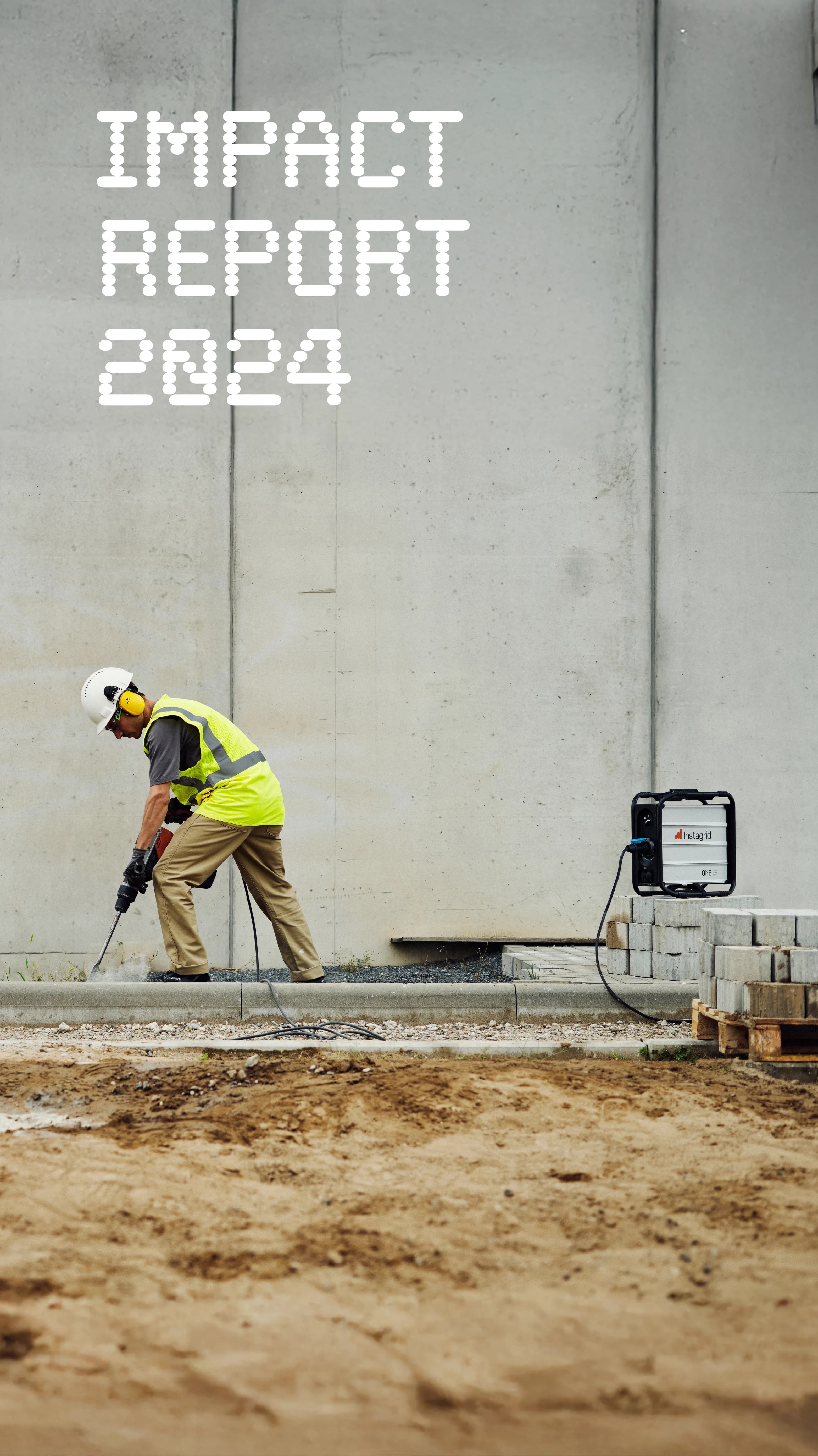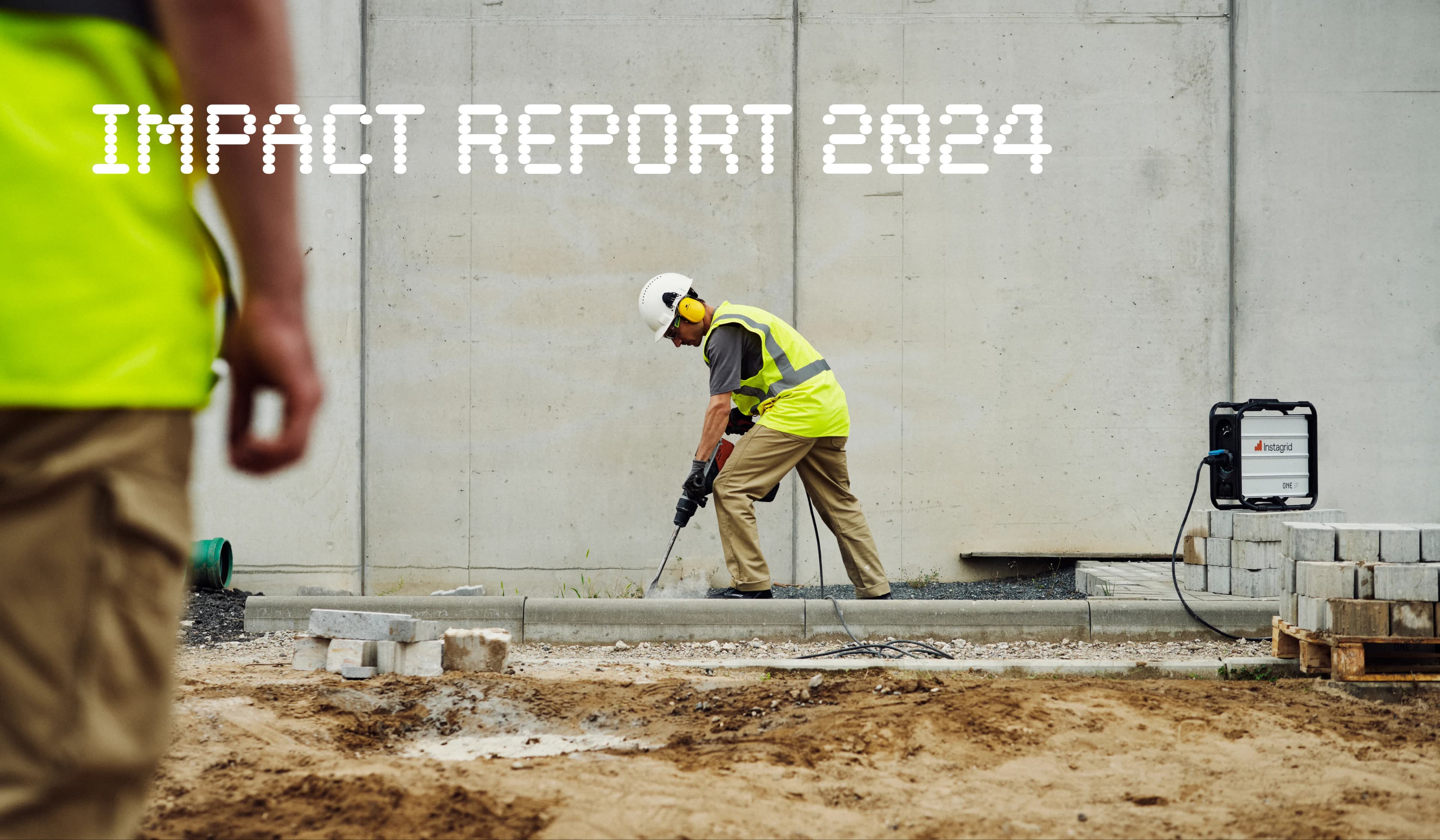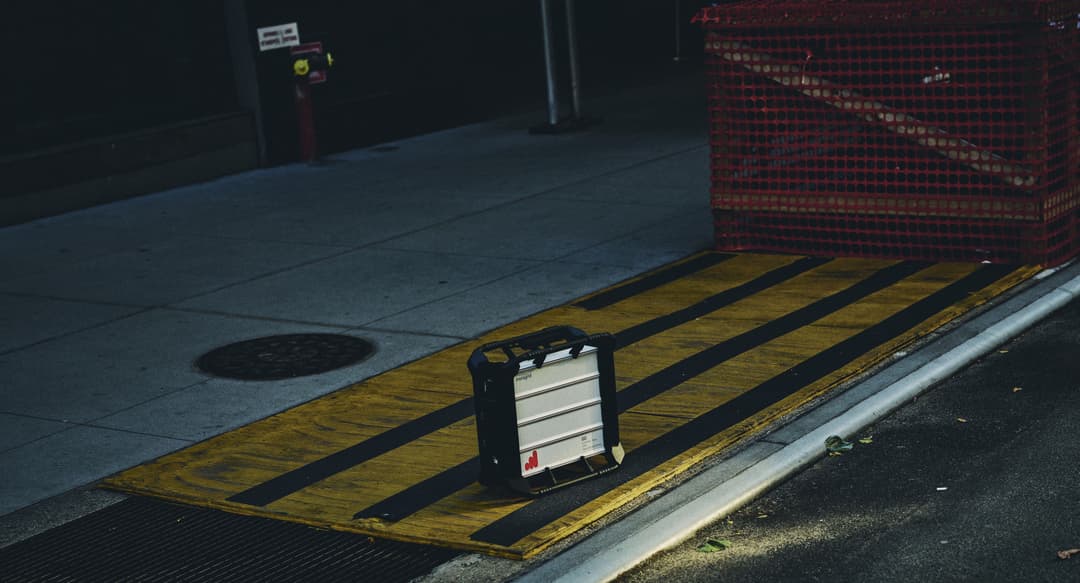
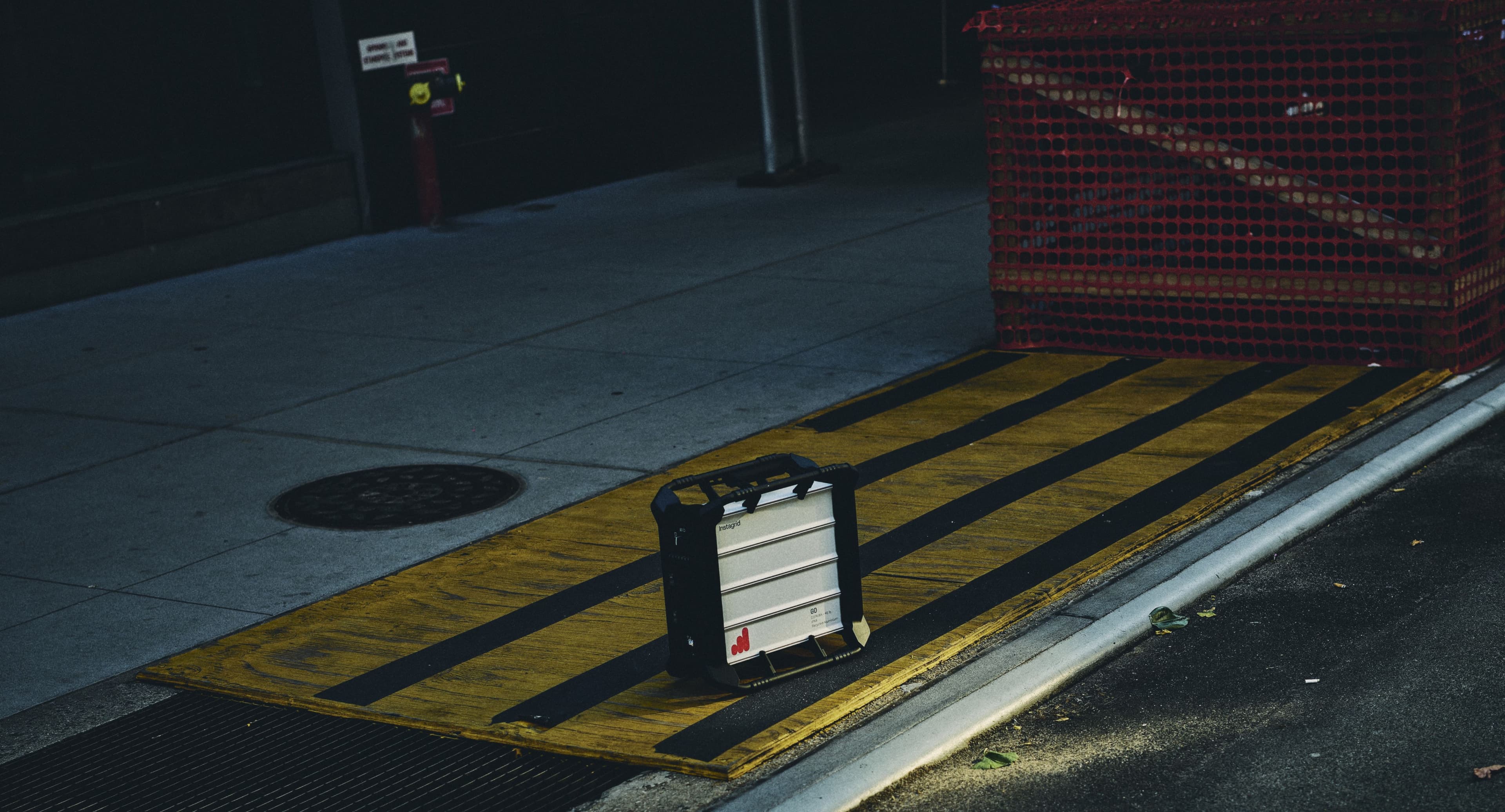
Instant power lasting impact
Explore our key impact highlights below or in our executive summary. To dive even deeper into the data and insights, download the full report.
Instagrid powers
Cleaner air
By replacing fuel-driven combustion generators to cut down urban air pollution.
Instagrid powers
Safer workplaces
By removing noise, fumes, and cables to create healthier, happier and safer working environments.
Instagrid powers
Clean energy transition
By helping decarbonize industries reliant on off-grid energy.
Instagrid powers
Reduced costs
By cutting lifetime costs by up to 80%.


CO2e SAVED
This is where we are now; yes, right now
Every portable power supply that replaces a fossil fuelled combustion engine pushes the clean energy transition and helps cut down CO₂e emissions. Check out the impact achieved so far and come back later to see how it has grown.
Potential impact in your hands
We understand the daily challenges our customers face on site. We're here to provide impactful solutions. So far, we've accomplished a lot together:
297 t
Cut 297 t of NOx emissions
215,378 t
Cut 215,378 t of CO emissions
701,005 t
Cut 701,005 t of CO₂e emissions
Calculate the emission savings potential at your workplace
4500 gallons
How many gallons of fuel is consumed by your generator(s) in a year?
*A typical passenger vehicle emits about 5.07 tons of CO2 per year. (Source: United States Environmental Protection Agency) 5.07 tons of CO2 p.a. = 845 lbs per month. Switching from petrol generators to the battery-powered Instagrid ONE reduces CO2 emissions by avoiding petrol. Savings are calculated by comparing the two.
A science-based approach
Looking for more data behind the numbers? We’ve got the facts.
And don’t just take it from us. We turn to external partners to analyse and validate our impact through the whole product lifecycle. With these agencies and following international standards, we’ve conducted extensive studies on the environmental impact of our batteries. In our whitepaper, we have shared the many layers of our product development and design to truly evaluate the impact our innovation carries.
Our life cycle assessment (LCA) is the basis of many of our calculations and numbers. We update our LCA on a regular basis because the more data we collect, the better we all get.
Impact on every level
Impact is woven in our DNA. From pushing the clean energy transition and setting local emissions to zero to the very core of our product design and its entire life cycle.
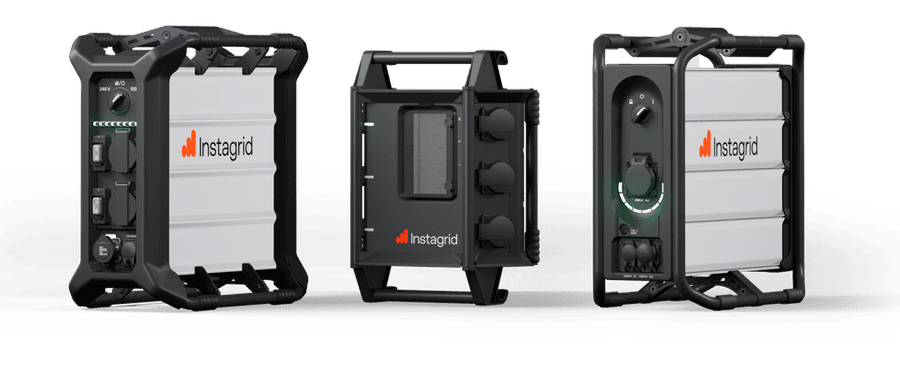

Find your local take-back system
We’re currently extending partnerships with battery recycling experts to increase our service and will continuously add these to our partner list.
Meet some of our champions
Our customers don’t have to compromise – sustainable impact and cost efficiency can go hand in hand.

“Sustainability and green products are a hot topic right now, it’s something we have to look for for the future. As a rental facility, we’re always having to keep up with the latest trends and the latest equipment available. In the three years we’ve had Instagrid units, we’ve very quickly found that they’ve become an indispensable part of our rental stock.”
Douglas Low
Camera Revolution
Meet some of our champions
Our customers don’t have to compromise – sustainable impact and cost efficiency can go hand in hand.
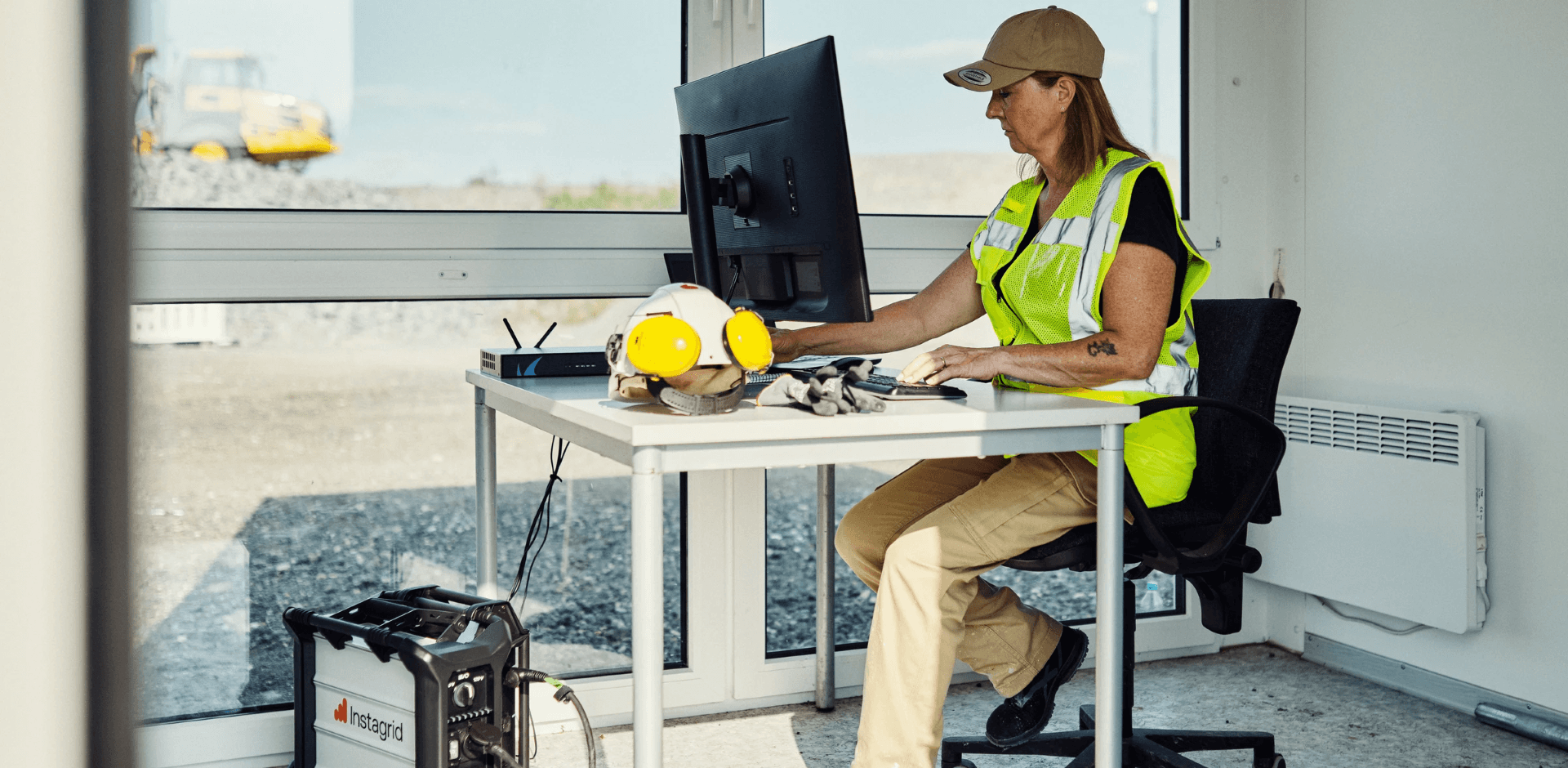
“Instagrid’s reporting platform is easy to understand and provides valuable information for data analysis to justify our emission reduction.”
Alessa Pardave Navarro
Cleantech Innovation Lead at Ferrovial
Meet some of our champions
Our customers don’t have to compromise – sustainable impact and cost efficiency can go hand in hand.

“The Instagrid GO 36 portable battery system is compact, reliable, and provides the consistent power we need to keep our subcontractors’ tools running smoothly throughout the day. Our team couldn’t be more satisfied with its performance, versatility, and quick charge time.”
General Contractor
Hummel Construction & Development
Meet some of our champions
Our customers don’t have to compromise – sustainable impact and cost efficiency can go hand in hand.

“Sustainability and green products are a hot topic right now, it’s something we have to look for for the future. As a rental facility, we’re always having to keep up with the latest trends and the latest equipment available. In the three years we’ve had Instagrid units, we’ve very quickly found that they’ve become an indispensable part of our rental stock.”
Douglas Low
Camera Revolution
Meet some of our champions
Our customers don’t have to compromise – sustainable impact and cost efficiency can go hand in hand.

“Instagrid’s reporting platform is easy to understand and provides valuable information for data analysis to justify our emission reduction.”
Alessa Pardave Navarro
Cleantech Innovation Lead at Ferrovial
We want to answer all your questions – including the tough ones
Anything left unanswered? Take a look at our FAQ below or download the full Impact Report to find a more extensive review of our impact data. If you can’t find what you’re looking for, drop us a message. We’ll be happy to answer anything – even the tough ones.
Interested in previous reports?
FAQ
Do battery-based power supplies have bigger emissions over their lifetime than combustion engines?
Do battery-based power supplies have bigger emissions over their lifetime than combustion engines?
Together with independent agencies and following international frameworks, we have conducted certified Life Cycle Assessments (LCAs) for our products Instagrid ONE and Instagrid GO, including benchmarking assessments. We partnered with TÜV NORD in Germany to conduct emission measurements and fuel consumption comparisons for diesel, gas and inverter generators. Four life cycle stages were considered: production, transportation, use, and end-of-life. The results show that our products have up to 94% lower carbon footprint over the product lifetime than a generator with a similar load profile.
Are the batteries thrown away after they've done their job?
Are the batteries thrown away after they've done their job?
There are several options to choose from when a battery reaches its end-of-life, whether through wear or defect. The three most common options are:
1) Extending the initial use-phase (through repair and re-manufacturing)
2) Repurposing (also called second-life)
3) Recycling
The best option is to keep a product in its initial use phase as long as possible so that the duty time of each component is maximised. In a battery product, components are often joined by material-to-material connections (e.g. through welding), making the replacement of relevant parts and components often impossible.
At Instagrid, we follow clear design rules (called the Guidelines for Sustainable Product Development), and we’ve designed our products in a modular way that facilitates the dismantling and repair of each component, enabling our customers to repair minor defects on the frame. This empowers customers to repair minor issues themselves, while major issues are handled by our technical service team. In 2024, we achieved an impressive repair rate of 96%.
For products that cannot be repaired, we have extended our participation in national take-back schemes to 30 countries. Often customers don’t know where to return batteries when they are defective. This initiative supports directing customers to drop-off points where they can deposit worn-out or defective batteries for recycling.
Can a battery be properly recycled?
Can a battery be properly recycled?
Today, commercial recycling is mostly limited to physical pre-treatment, followed by a pyrometallurgic process that only recovers a small fraction of the materials. We believe that as a young company, we have a role to play in helping push a recycling transition and partner to find new approaches to commercial recycling of battery cells. To make strides in this area, we have done three things:
1. We participate in national take-back schemes in 30 countries and continuously expand these partnerships.
2. We’ve teamed up with the FIT Institute to assess our products’ recyclability and determined that that 91% of the Instagrid ONE can be recycled. We’re looking to better understand which technology is needed to recycle specific components, and which components are critical and subject to disposal.
3. We are establishing partnerships with experts in the recycling field for different components, such as printed circuit board assemblies (PCBAs) and battery cells, to explore innovative recycling strategies.
How about responsible sourcing?
How about responsible sourcing?
As a young company, we have begun by building trusted relationships with our direct suppliers and working together with them and their sub-suppliers to have a positive impact deep in the supply chain. We carefully select our suppliers (and request them to do so with their sub-suppliers) according to our self-set sustainability guidelines consisting of environmental and social requirements.
We are aware that long supply chains that involve critical materials can be impacted by human rights violations such as modern slavery or child labour in the deeper supply chain. We seek to avoid, prevent, mitigate and end these negative impacts where possible. In 2023, we rolled out an audit program covering social and environmental criteria. We regularly map our supply chain step-by-step to understand potential risks and impacts in the social context and reach out to suppliers of critical components to learn more about their due diligence and understand where we can support or join forces. We foster a culture of transparency and open collaboration. Through this, we create opportunities for mutual learning, transparent communication and building trusting and long-lasting relationships.
Interested in learning more about our supply chain? Dive into our 2024 Impact Report.
What does Instagrid expect of its suppliers and business partners?
What does Instagrid expect of its suppliers and business partners?
At Instagrid, we expect our suppliers and business partners to share our values and follow ethical business practices. Therefore, we have implemented Responsible Sourcing Principles based on the Instagrid Code of Conduct. The principles cover the areas of labour rights, human rights, health and safety, and environmental protection and product circularity.
Read more about our responsible sourcing here or in our 2024 Impact Report.
Where can I report a violation of Instagrid’s principles?
Where can I report a violation of Instagrid’s principles?
To maintain transparency and prevent violations of Instagrid Responsible Sourcing Principles, we have established a whistleblower tool. This system empowers suppliers, business partners and employees to report activities that are considered illegal or unethical.
If you want to access the whistleblower tool, click here.
